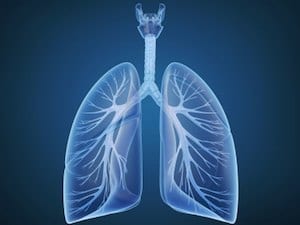
MONDAY, June 25, 2018 (HealthDay News) — Low levels of vitamin D are associated with an increased risk of a disease that causes lung inflammation and scarring, researchers say.
About 200,000 cases of interstitial lung disease (ILD) are diagnosed each year in the United States. Most cases are caused by environmental toxins such as asbestos or coal dust, but ILD also can be caused by autoimmune disorders, infections, or medication side effects. In some cases, the cause is unknown.
Researchers from Johns Hopkins University in Baltimore reviewed medical data collected on more than 6,000 adults over 10 years. They found that lower than normal blood levels of vitamin D were associated with an increased risk of early signs of ILD.
The findings suggest that low vitamin D might be one factor in the development of interstitial lung disease, according to the authors of the study. It was published June 19 in the Journal of Nutrition.
“We knew that the activated vitamin D hormone has anti-inflammatory properties and helps regulate the immune system, which goes awry in ILD,” said study leader Dr. Erin Michos. She’s associate director of preventive cardiology at the university’s Center for the Prevention of Cardiovascular Disease.
“There was also evidence in the literature that vitamin D plays a role in obstructive lung diseases such as asthma and COPD, and we now found that the association exists with this scarring form of lung disease, too,” Michos said in a university news release.
“Our study suggests that adequate levels of vitamin D may be important for lung health. We might now consider adding vitamin D deficiency to the list of factors involved in disease processes, along with the known ILD risk factors such as environmental toxins and smoking,” Michos said.
The researchers cautioned that the study results don’t prove a cause-and-effect link. However, the findings do support the need for future studies to investigate whether treatment of vitamin D deficiency, such as with supplements or sunlight exposure, could potentially prevent or slow the progression of the disorder.
There is no proven treatment or cure for ILD. Most people with the disease don’t live more than five years after diagnosis, the researchers said.
More information
The American Lung Association has more on interstitial lung disease.
